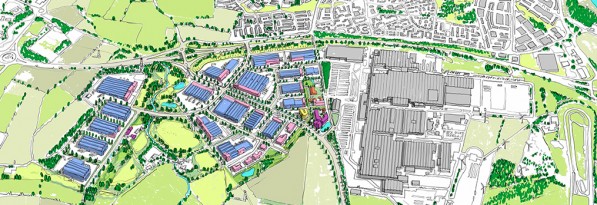
Case Study
PORT OF TYNE, IDEALLY PLACED FOR IAMP
Plans are underway to create a world-class hub for high-tech industries and advanced manufacturing, bringing with it more than £400m of investment to the North East.
Representing one of the most significant economic developments in the region for decades, the International Advanced Manufacturing Park (IAMP) is a joint initiative from South Tyneside and Sunderland City Councils. Designated a Scheme of National Significance, the £91.9m project is planned for land to the north of the Nissan factory in Washington. It will be an international location for advanced manufacturing and European-scale supply chain industries and maximise links with Nissan and other high value automotive industries.
Covering 100 hectares, the IAMP will include around 260,000m² of commercial space alongside new infrastructure and services. The project will deliver more than 5,000 skilled jobs and attract major international businesses to the North East.
The Port of Tyne’s close proximity makes it the ideal port of choice for manufacturers and suppliers to the IAMP. As the UK’s second largest car export hub, we have a solid reputation in the automotive world. Having supported Nissan and its supply chain for the past 30 years, we understand the exacting demands of this specialist sector, and we do our best to exceed them. We also provide expert handling and logistics for time-critical automotive parts imported in containers.
The Port's advantageous location on England’s North East coast and comprehensive network of sea, road and rail connections, offers our customers swift and easy access to markets across the UK and around the world. As well as regular shortsea (Europe,Baltic , Scandinavia) and deepsea (Asia) shipping services, we also have the benefit of a Channel Tunnel approved automotive rail terminal.
The Government has pledged £42m through the North East Local Enterprise Partnership (LEP) towards infrastructure at IAMP including new roads, bridges and environmental enhancements and the project will also see contributions from the two local authorities and Enterprise Zone income in the form of retained business rates. Subject to further permissions, work on the site should begin in 2018 with first occupiers planned on site in 2019.


